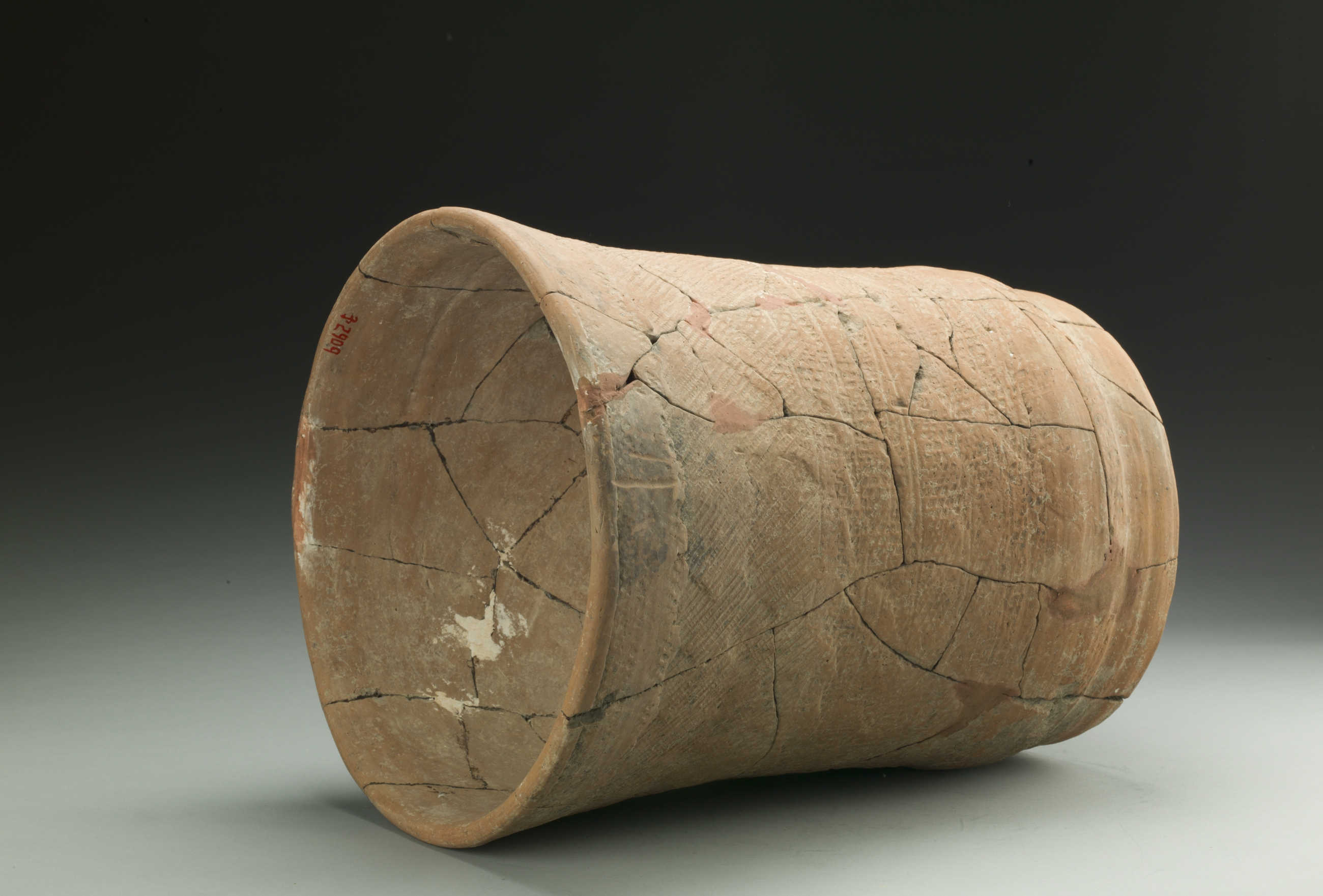Date: Longshan culture (5000-4000 years ago), Neolithic Age
Provenance: Unearthed at Pingliangtai Ancient City site in Huaiyang, Henan province, 1980
Measurements: Length: 42.5cm, Wide end diameter: 34 cm, Narrow end diameter: 27.5 cm
The pottery drain pipe, a wheel-thrown red pottery mixed with grit, exhibits a straight shape with a slightly narrow waist and different-sized ends on two sides, adorned with a cord pattern throughout.
Dating back approximately 4,300 years, Pingliangtai Ancient City in Huaiyang belongs to the Longshan culture period. The city has a square shape in plan, encompassing a walled town and a moat, and spanning over 100,000 square meters. Three city gates are located in the south, north and west sides. Row houses within the city, arranged from east-west, feature high clay platforms and have a well-organized layout with the north-south roads as the central axis.
The city's drainage system consists of longitudinal and horizonal drainage ditches scattered along the row houses and the roads. Excavations under the south city gate revealed two rows of pottery drain pipes laid side by side. These pipes were arranged in sets of three within a ditch. Each section of the pipe has different diameters at both ends, allowing them to fit snugly together and facilitating effective drainage outside the city. The pottery drainage pipes, along with interconnected longitudinal and horizontal channels, constitute the earliest and most complete urban drainage system known in China to date. This also provides excellent material for studying early urban water resource management.

